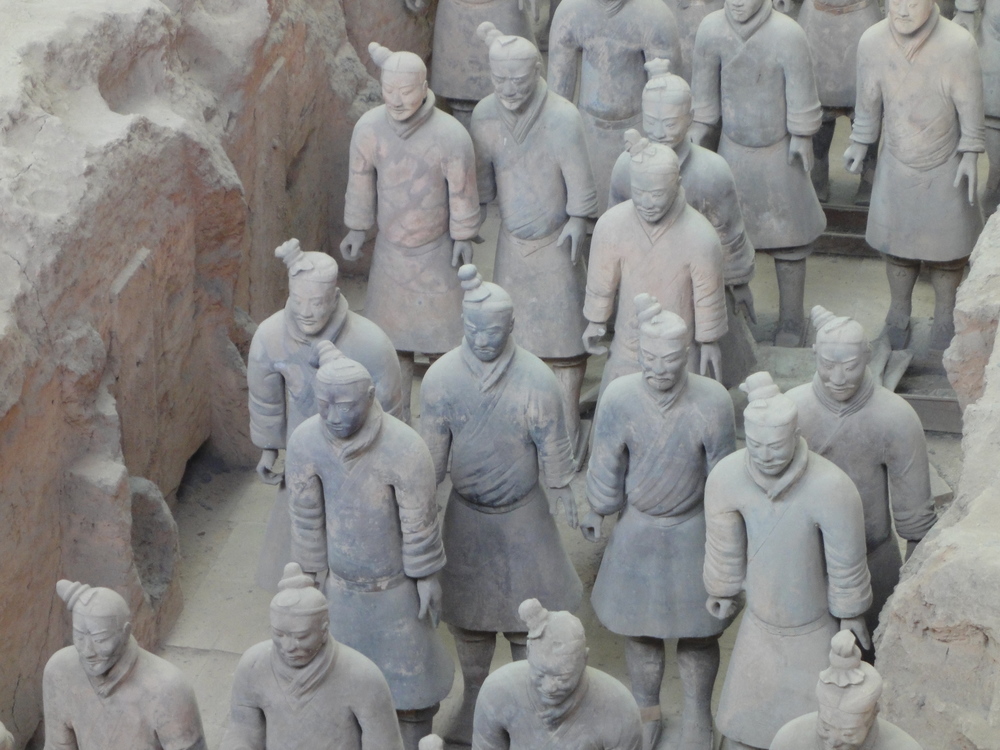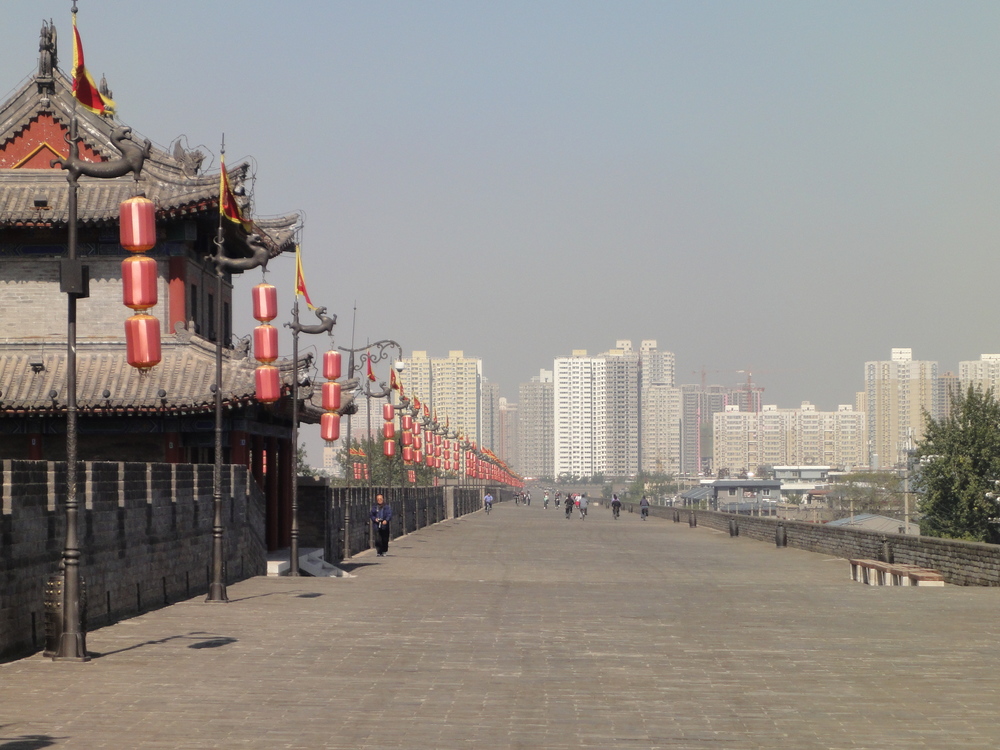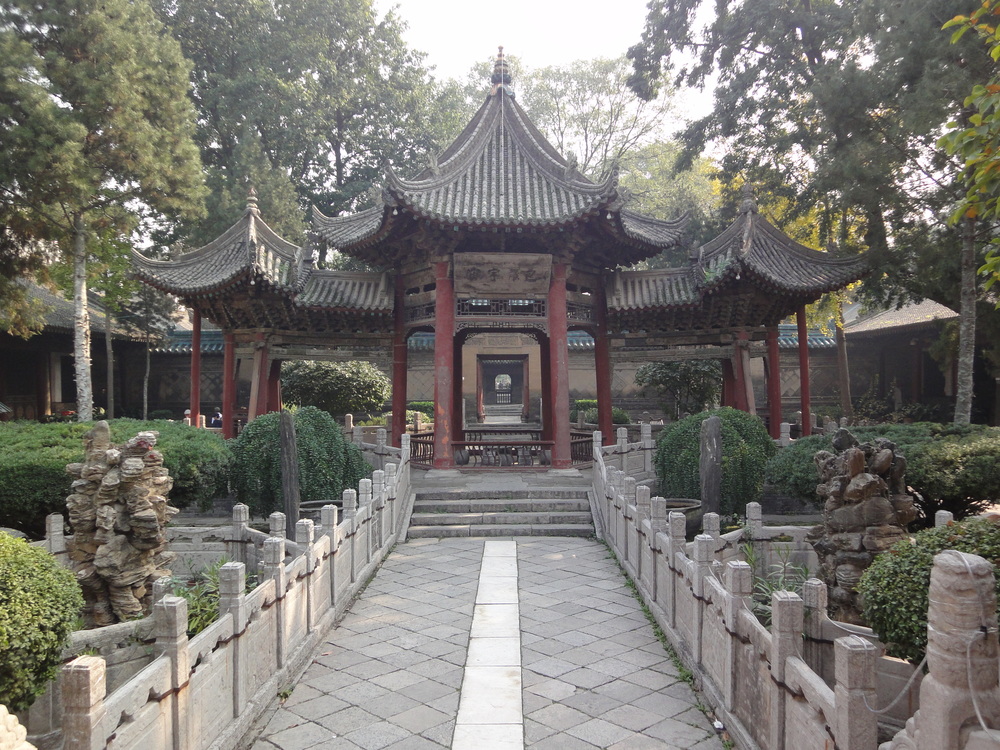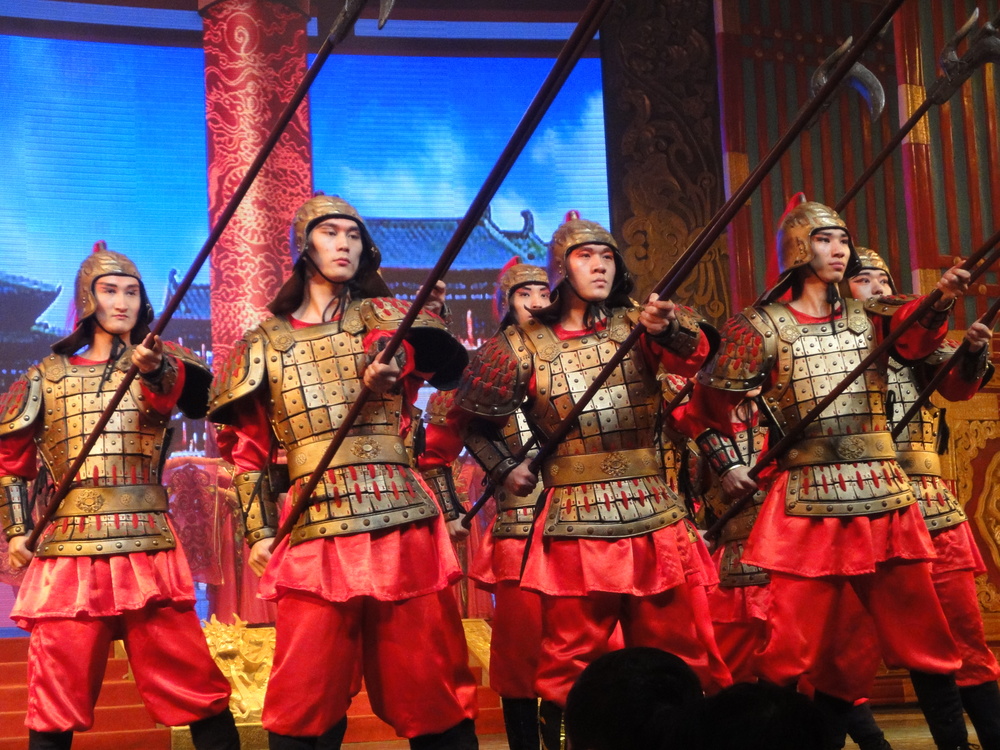Weary
heads rise from their bunks as the sun seeps through smudged windows. It’s 7am
and the overnight train from Beijing to Xi’an is rattling along its tracks as
passengers point to the outskirts of their destination. Lush farmland coasts
by. A blue tractor tears up its master’s field for the new season’s crop. The
rugged, orange ranges leading to Mount Huashan glow in the distance before
sky-scrapers emerge like young seedlings shooting up from soil.
Xi’an,
or ‘Western Peace’, is regarded as an eternal city, the birthplace of China’s
most ancient civilisations and boasts a history of 6,500 years. Xi’an is the
capital of Shaanxi province, located in China’s north-west and is best known
for its archaeology.

Rows
of terracotta warriors and horses, standing to attention ready for an attack,
make for a threatening yet endearing scene. In 246BC, 13-year-old Qin Shi Huang
ascended to the throne, later becoming the first emperor of China. Immediately,
Qin Shi Huang started work on a mausoleum and spent 11 years constructing his
future resting place. To guard it, he commissioned for an army of terracotta
warriors and horses which took 38 years and over 700,000 craftsmen to sculpt.
They were erected in precise rows outside the emperor’s mausoleum to depict his
own army, guarding him in the afterlife. A group of peasants discovered pottery
in the area in 1974, subsequently exposing this archaeological goldmine. Since
then, over 7,000 artefacts have been excavated and restored though many are
still yet to be discovered. Hundreds of these life-sized terracotta warriors
and their steeds stand in situ, each unveiling their own unique facial features
and regalia. There are three excavation pits comprising this museum, covering a
staggering 16,300 square metres.

Closer
to the city’s business district, travellers discover City Wall orbiting Xi’an.
During his reign, Zhu Yuanzhang, the first emperor of the Ming Dynasty
(1368-1644), captured this area. He was advised to build high walls to enlarge
existing ones in an attempt to fortify the city, unify nearby states and store
food supplies. Xi’an City Wall stands 12 metres tall, 14 metres wide and covers
13.7 kilometres. Ramparts were built every 120 metres so soldiers could fend
off enemies. Now, visitors climb the ramparts’ staircases and stroll along the
wall’s expanse while gazing at chains of red lanterns overhead. Some hire push
bikes for a more mobile experience. Busy, traffic-lined West Street is spotted
from a watchtower. This was once the dusty start to the Silk Road trade route.
Now, a corporate skyline crowds the horizon; a collision of old and new
Xi’an.

While
the Terracotta Army and City Wall punctuate Xi’an’s archaeological
significance, it’s the city’s historical and cultural elements that sometimes
take a back seat. But they shouldn’t. Xi’an is a fore-founding city for
Buddhism in China. Big Wild Goose Pagoda towers over Xi’an in the Da Ci’en
Temple complex and was built in 652 during Emperor Gaozong’s reign in the Tang
Dynasty. Its purpose was to help house Buddhist materials, collected from India
by scholar Xuanzang. Over 17 years and crossing 100 countries, Xuanzang
gathered Buddha figures, sutras (later translated into Chinese totalling 1,335
volumes) and relics. Upon his return, Xuanzang supervised Big Wild Goose
Pagoda’s 60-metre, five-storey construction. More stories were added in 704.
Then in 1556, the pagoda was devastated by an earthquake. The pagoda was
restored and now stands at seven stories with a prominent lean. In the
manicured monastery gardens circling the pagoda, chickens roam and scratch,
birds sing from gold-gilded cages and Buddha statues shine. The grounds exude
peace and tranquillity.

Islam
in Xi’an is characterised by the pagoda-styled Great Mosque, located on Muslim
Snack Street in the Muslim Quarter. Ten mosques lie in this area alone. Yet,
The Great Mosque is the oldest, largest and most-preserved mosque, built in 742
when Islam was introduced to northwest China by Arab merchants from Persia and
Afghanistan. What defines The Great Mosque is its distinct juxtaposition of
traditional Islamic and Chinese pagoda architecture. After strolling through
five pristine courtyards, some adorned by Arabic calligraphy, visitors step
back out into Muslim Snack Street to the tempting smells of dried fruits,
roasted chestnuts, deep-fried delicacies and steamed guan tang baozi.

For
a satisfying dinner, travellers retreat and dive into stacks of bamboo baskets
filled with steamed dumplings at Tang Dynasty Palace. Flavours range from duck,
to walnut and vegetable and the dumplings themselves are hand-moulded in the
shape of ducks, walnuts and celery leaves. Once bellies are filled, the Tang
Dynasty music and dance performance begins with a pluck of a zheng
string and a bow delicately scraping an erhu. Guests are smitten by an
opera of dance routines, narrative and singing that re-enacts the prosperous
years of Xi’an’s Tang Dynasty period.




